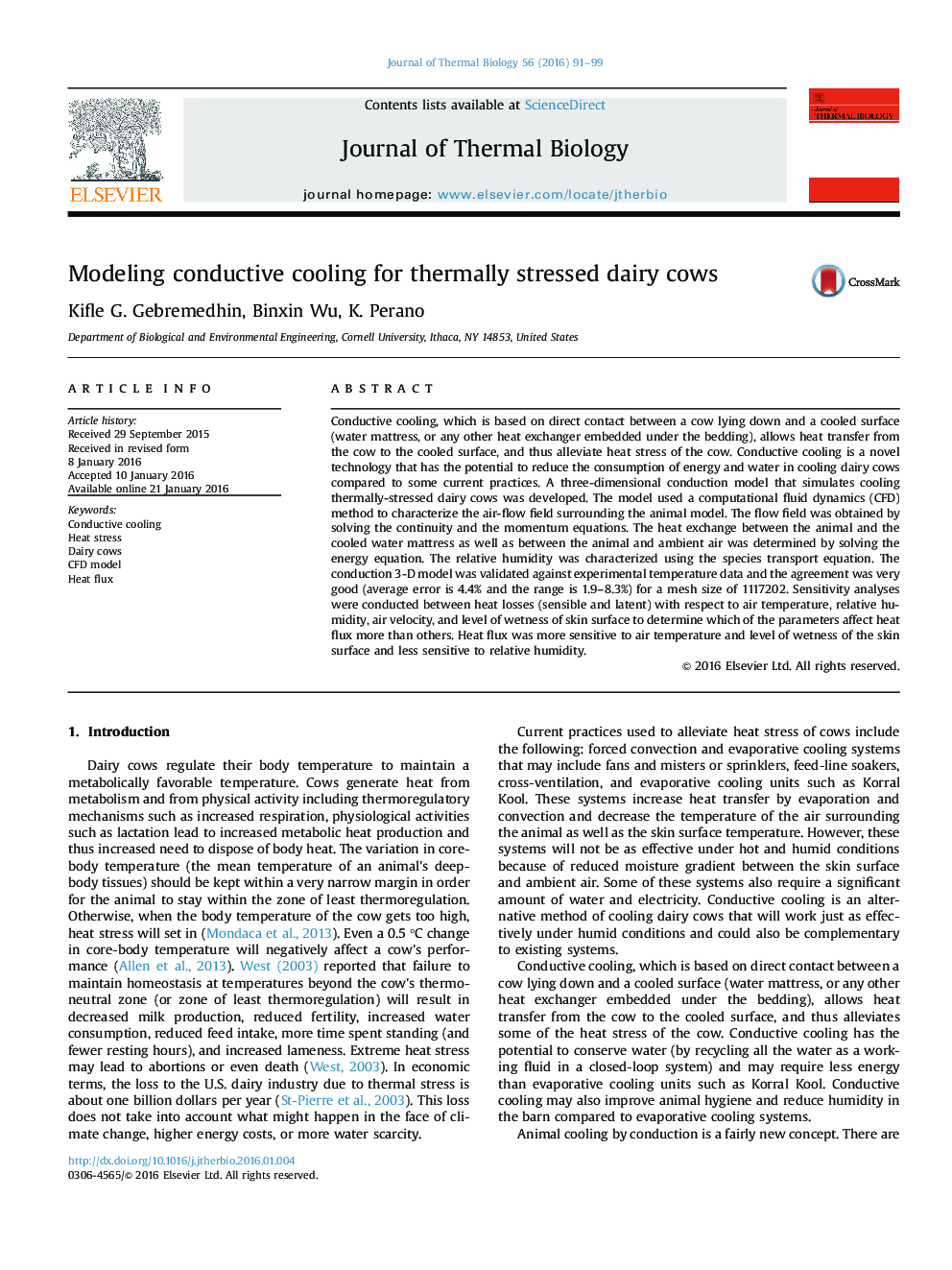| کد مقاله | کد نشریه | سال انتشار | مقاله انگلیسی | نسخه تمام متن |
|---|---|---|---|---|
| 2842745 | 1571090 | 2016 | 9 صفحه PDF | دانلود رایگان |
• This study consists of a 3-D heat conduction model and a 1-D convection, radiation and evaporation model.
• The 3-D model includes species transport model (Eq. 5) that predicts relative humidity.
• The 3-D conduction model is validated against experimental data collected from live animals.
Conductive cooling, which is based on direct contact between a cow lying down and a cooled surface (water mattress, or any other heat exchanger embedded under the bedding), allows heat transfer from the cow to the cooled surface, and thus alleviate heat stress of the cow. Conductive cooling is a novel technology that has the potential to reduce the consumption of energy and water in cooling dairy cows compared to some current practices. A three-dimensional conduction model that simulates cooling thermally-stressed dairy cows was developed. The model used a computational fluid dynamics (CFD) method to characterize the air-flow field surrounding the animal model. The flow field was obtained by solving the continuity and the momentum equations. The heat exchange between the animal and the cooled water mattress as well as between the animal and ambient air was determined by solving the energy equation. The relative humidity was characterized using the species transport equation. The conduction 3-D model was validated against experimental temperature data and the agreement was very good (average error is 4.4% and the range is 1.9–8.3%) for a mesh size of 1117202. Sensitivity analyses were conducted between heat losses (sensible and latent) with respect to air temperature, relative humidity, air velocity, and level of wetness of skin surface to determine which of the parameters affect heat flux more than others. Heat flux was more sensitive to air temperature and level of wetness of the skin surface and less sensitive to relative humidity.
Journal: Journal of Thermal Biology - Volume 56, February 2016, Pages 91–99
